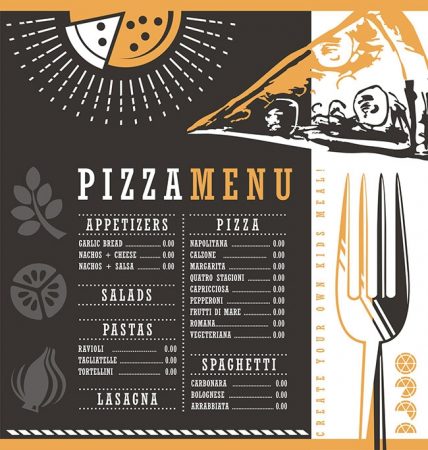
Giorgio’s corner: How to keep your pizza menu fresh
By Giorgio Taverniti
News annexHow to keep your menu fresh
 The food items are the stars of the menu, but it’s important not to overlook presentation. Photo: Fotolia
The food items are the stars of the menu, but it’s important not to overlook presentation. Photo: FotoliaYour menu is your masterpiece. You create it, you edit it, you perfect it. Your creative mind is in full bloom and you’re anxiously waiting for people to enjoy your food.
A menu is a labour of love and can sometimes be hard to change from a chef’s perspective. My menu items have been on the chopping block many times and with good reason. I love to create new menu ideas and need to make room for them by letting go of the older ones. Otherwise, my menu would read like a novel.
As the saying goes, “Out with the old, in with the new.” New additions allow you to stay on top of trends, all the while keeping your menu fresh. It’s important to routinely review your business sales and see which menu items have increased in sales, which fan favourites remain and which items are not performing.
Despite my personal love for the non-performing items, they do ultimately need to be axed. The removal of unpopular items is necessary: quite frankly, it costs money to keep ingredients on hand to make them without any demand.
I often bring back as a weekly special an item I have taken off the menu. This strategy allows the customers who did love it to have it on occasion and prevents me losing money on a product that will not sell.
The introduction of new toppings is an important addition. Some toppings are fads but can quickly become trends and have true staying power. Despite my personal views on these new toppings – be they fad or trend – as a business owner I know I must always be willing to try them and to adapt to them.
It’s important to evaluate each new fad to see if it can fit with your menu and to ensure you don’t commit to it financially without the proper demand for it. A perfect example of this is pineapple. Half of my customers hate pineapple on pizza and cannot understand how fruit on a pizza could be tasty. The other half order it on a weekly basis and swear by the explosion of flavour it brings to the pizza or calzone.
Truth be told, I am not a lover of pineapple on a pizza. When I first introduced it, I had no sure way of knowing how it would perform. Would people like it? The best way to test out a new topping is to give it a trial run. I made a point of informing my staff and customers that the new topping was available. Once I saw there was a steady demand, I quickly made the decision to make it a part of the regular menu. Pineapple is now is one of my bestsellers.
The food items are the stars of the menu, but it’s important not to overlook menu presentation. I’ve been in business long enough to know that the menu layout and design are just as important as the items on the menu
Menus, like anything else in your business, can become dated. A fresh look can give a little spring to the new items as well as make the classic ones look shiny and new. The key elements to keep in mind when revamping the look of your menu are the font, size, colour, layout and description. These are all equally important. Haven’t we all come across a menu we couldn’t read that well, didn’t understand or thought was ugly? Elements of the menu should be attractive in their description and overall look. A bad font can set the tone of the dining experience.
A menu also should also be logical and easy to navigate; for example, appetizers should be followed by main dishes, etc. Here is a rule of thumb I follow: if I make a major change to the menu items then I should also tweak the look of the menu. It allows my business to maintain that “new” feeling.
We can all be hesitant to embrace changes, but when done right they have the potential to win you new customers, increase your sales and ensure your pizzeria’s longevity.
Giorgio Taverniti owns Frank’s Pizza House in Toronto, which has been in his family since 1990. A graduate of George Brown College’s culinary management and Italian culinary programs, Giorgio helped found a popular pizza-making workshop at the college and ran it for three years.
Print this page